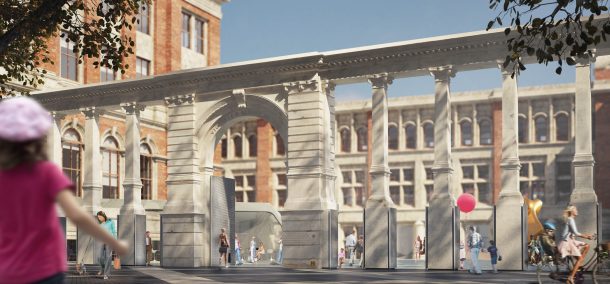
This Summer the V&A will reveal its new spaces on Exhibition Road. We will regularly be sharing news leading up to the opening in July.
If you’ve visited the museum recently you may have noticed that the Aston Webb Screen has returned to Exhibition Road and is slowly being uncovered as the scaffolding that surrounds it is dismantled.
This is a sneak-peek of the project that will transform the way visitors will experience the museum. The ambitious development will provide a new entrance from Exhibition Road, a beautifully designed ceramic courtyard creating space for installations and events, a purpose-built gallery for our world-class exhibition programme, plus a new café and exhibition shop – all opening at the same time this summer.
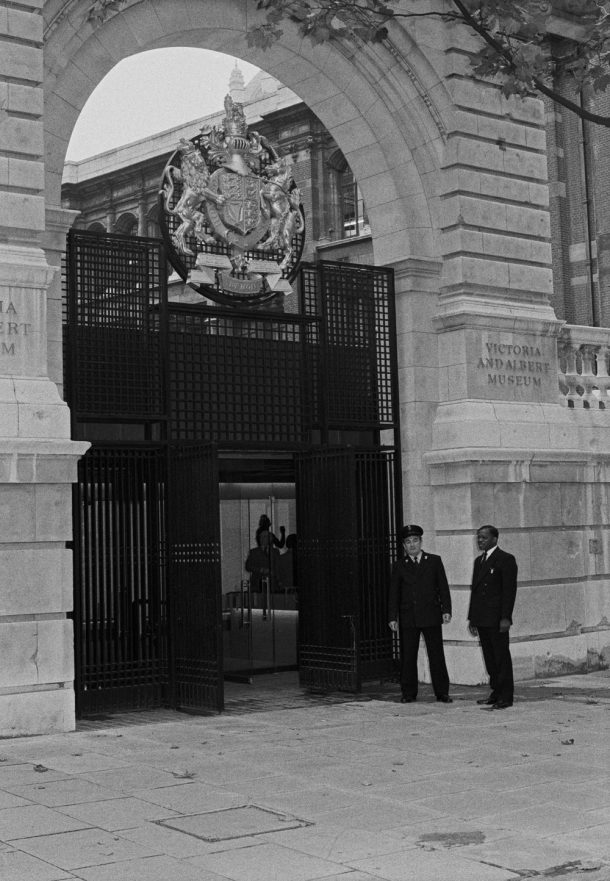
The Aston Webb Screen was built in 1909 as a clever architectural intervention to hide the museum’s Victorian boilers. The screen originally featured a solid stone wall facing Exhibition Road (on the west side of the museum), with a crested central arch, and topped by a graceful colonnade that allowed passers-by a few discrete views of the surrounding buildings.
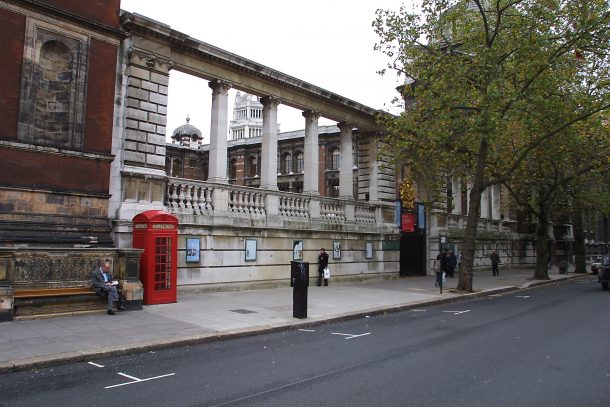
In 2013 – as work began on realising Amanda Levete’s design for a new courtyard and entrance – the Aston Webb Screen was removed to protect it and allow the work to go ahead. Compromising 1375 stones, the screen has been in safe storage for the last three years. At the end of 2016, work started on re-assembling this historic structure. The screen has now been returned to site by our contractor PAYE as we near the completion of the project.
Until this week, the view of the screen was obstructed by 9.25m high scaffolding, which PAYE’s specialist team of stone masons were using to carefully conserve the screen.
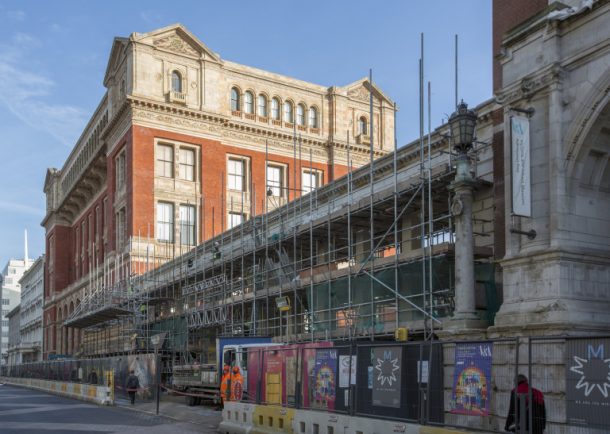
Over the course of the week the scaffolding has been removed. You’ll see that now that the screen has been partially revealed, it looks a little different. It has been modified to provide more of a welcome from Exhibition Road and our neighbouring museums, the Science Museum and the Natural History Museum, and to improve access. The bold new design means that come July, visitors will be able to walk through the historical structure into the new courtyard.
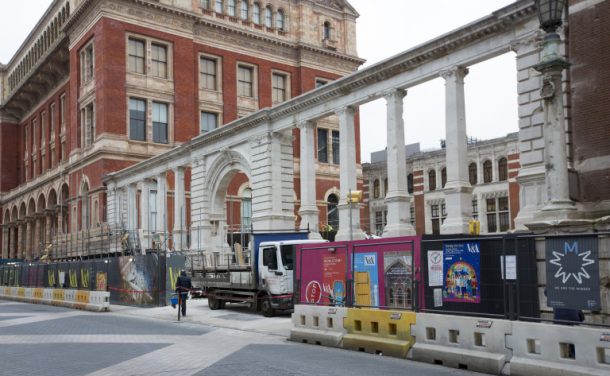
As we get closer to opening, watch this space for more on the how the new entrance is looking, plus other aspects of this huge change to the museum – creating beautiful and contemporary new settings whilst restoring and revealing much of the building’s original architecture.
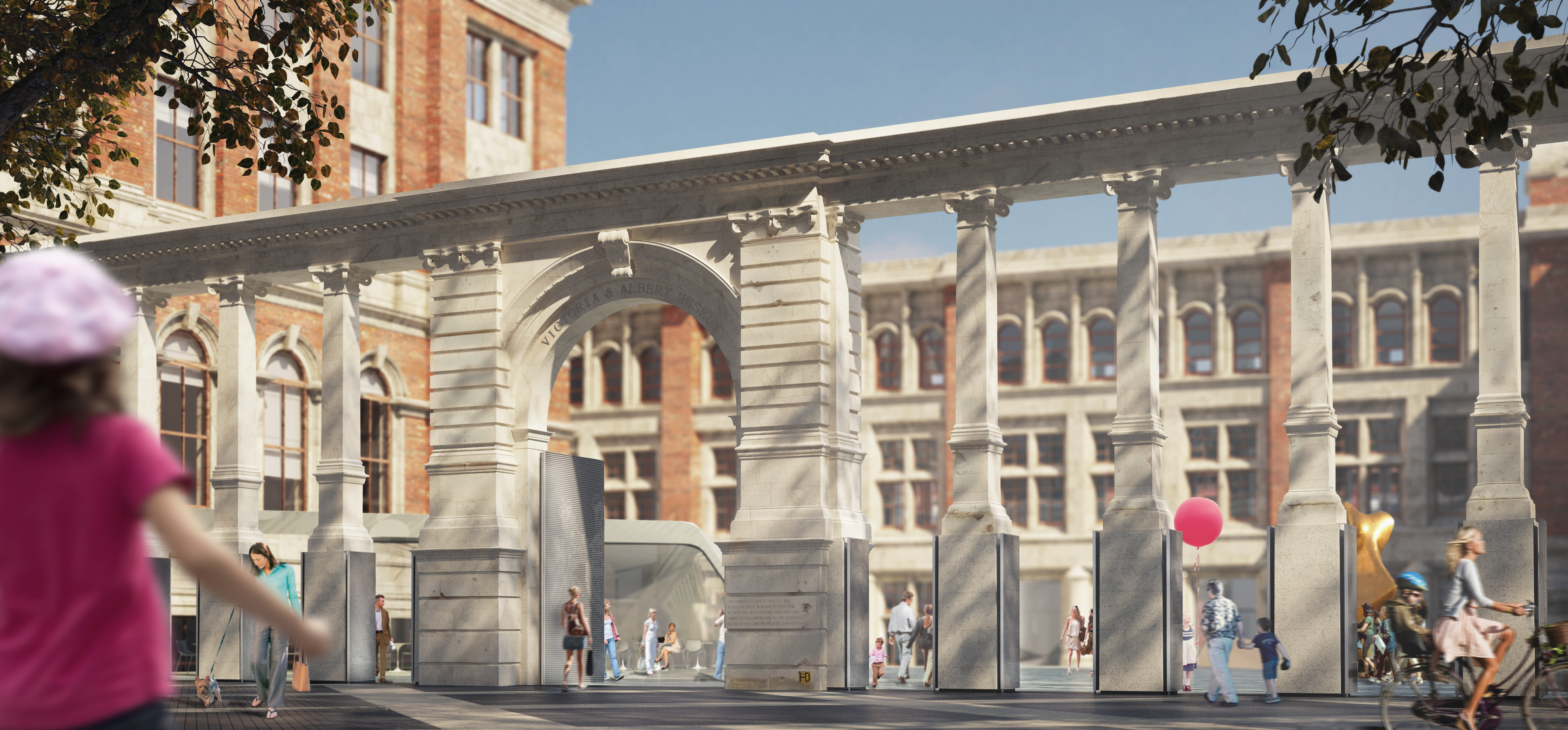


What has happened to the black gates with the coat of arms? They were designed by my partner Chris Hay when he was a post grad student at the Royal College of Art around 1979 or so – Douglas Coyne designed the coat of arms. There was a model made as well that was exhibited at the Royal Academy Summer Exhibition.
Thanks for sharing this. It’s looking great already and I’m excited to see more soon.
Was it really necessary to destroy Aston Webb’s screen so hamfistedly producing an ill-proportioned absurdity. While I’m sure the new facility will be welcomed, the arrogance and ignorance of contemporary architecture in dealing with traditional structures is saddening. If you are unable to handle Edwardian classicism yourself, get help from someone who can.
Why were 1375 stones compromised? I think the word you need is comprised.
The reasons for ‘slicing’ the screen open were, no doubt, sound. But the effect on the screen itself is wince-making. The dignity of the original has been wholly lost. The newly created scrawny sort-of columns are truly horrible. And at a museum of design!
I think the transformation is very successful – the opening up of the screen to enable better access to the public has made a statement of public ownership as against an apparent, maybe intentional, design of the original suggesting a more private colonial collection enjoyed by the few. design wise I think it is clever and elegant.
Yeah poor screen looks a bit odd now – I think putting arches in each space leaving the balustrade intact would have been a better idea.
Such a shame to unnecessarily mutilate a handsome piece of architecture – the columns now look absurd and the balustrades and the evidence for war-time bomb damage are gone. Surely the V&A’s buildings should be treated as important parts of its collection?
Congratulations to AL_A and historic building architects, Giles Quarme and Associates on the grand reveal of the Aston
Webb screen.
London’s museums and monuments continue to be modified at huge expense to enhance public access and amenities. Commentators quibble over the finer details of post-colonial rhetoric versus conservation imperative. Here in the former colonies (dare I say that?) public museums and monuments struggle to keep their doors open, lapse into ruin, and collections go unseen. A privileged culture retains its right to further privilege, whilst conveniently forgetting all the history that was made beyond its present borders. The export of post-colonial dogma to the developing world further paralyses those who try to curate our collective heritage regardless of trendy political views. We have precious little compared to the old imperial core! Maybe the screen of British denialism needs to be treated to a “reveal”.
I would have preferred gates that one could see through and let light through (like the Black wrought iron Gates) rather than ones that look like catering fire doors